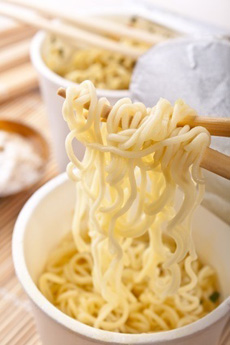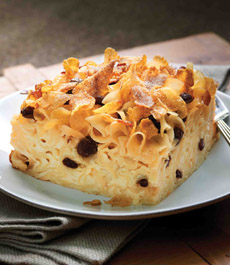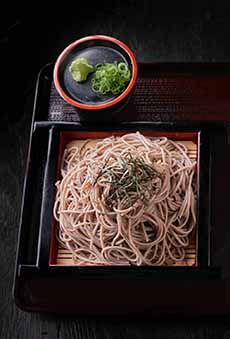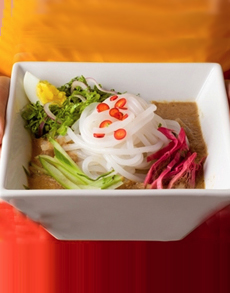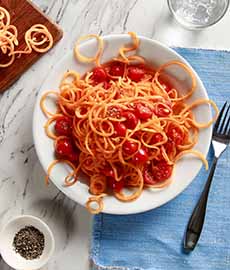Noodle Recipes & Noodle History For National Eat Your Noodles Day
|
Our oldest memory of noodles is, maybe, at age three, when our mother used to give us a plate of buttered noodles (today’s parents may open a can of Spaghetti-O’s instead). Later, she introduced us to green-hued spinach noodles—more intriguing to our young eye. Since March 11th is National Eat Your Noodles Day, we’ve having a plate of buttered noodles for lunch—this time, enhanced with minced chives, freshly ground pepper, and Parmesan cheese. Yum! Our word noodle derives from the German nudel meaning paste with egg. (Paste here refers to flour mixed with water). Italian pasta (the Italian word for paste) is made without egg (but always from semolina, the flour made from durum wheat). In the U.S., “noodle” refers to egg noodles as well as Asian forms of pasta. Noodles can be made from: The oldest evidence of noodles dates to 4,000 years ago in China. In 2005, archaeologists found an earthenware bowl that contained 4000-year-old noodles. Our oldest reference to date, it was uncovered at the Bronze Age archaeological site of Lajia, at the upper reaches of the Yellow River, on the border between the Chinese provinces of Gansu and Qinghai. These noodles were said to resemble lamian (or la-mian), a type of Chinese noodle made from soft wheat flour. The noodles are made by twisting, stretching, and folding the dough into strands. The earliest written record of noodles, also from China, is some 2,000 years later, in a book from the Eastern Han period (25–220 C.E.). Noodles made from wheat dough became a popular food in the Han dynasty, which reigned from 202 B.C.E. to 220 C.E. Across the globe, a mixture of flour and water called itrion was described by the 2nd-century Greek physician Galen (129-216 C.E.). It appears as itrium in 3rd-century Palestine. By the 9th century, itriyya (the Arabic cognate of the Greek word) was mentioned by Aramean physician and lexicographer Isho bar Ali. He defined it as string-like shapes made of semolina and dried before cooking [source]. And this, dear reader, is what became spaghetti, the Italian word for strings. Itriyya was brought by Arab invaders to Sicily in the 9th century, and the rest is Italian pasta history. Thence, noodles moved northward becoming part of most European cuisines, from the nudel of Germany to the makaron of Poland. In our own young century, we’ve seen the rise of vegetable noodles—particularly beet, carrot, butternut squash, and zucchini noodles—made possible by a kitchen spiralizer gadget. They deliver vegetable nutrition while sparing the refined carbohydrate of flour- and starch-based noodles/pasta. But they must be made from fresh vegetables. The desire by many for gluten-free pasta made from almond meal, brown rice, chickpeas, corn, lentils, quinoa, and others. Asian soba, mung bean, rice, sweet potato, and tofu noodles have always been gluten-free. |
|
|
|
CHECK OUT WHAT’S HAPPENING ON OUR HOME PAGE, THENIBBLE.COM. |
||
